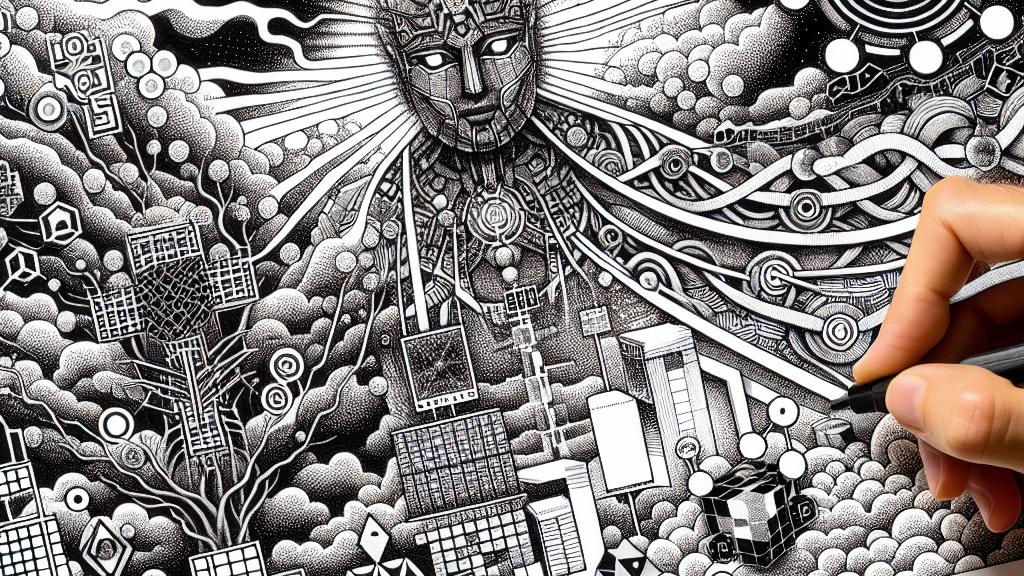Tips for Using AI in Software Development
Overview
- AI is revolutionizing software development processes, making them faster and more efficient.
- Smart integration of AI enhances collaboration and improves project outcomes.
- Comprehensive, up-to-date documentation is crucial for maximizing AI effectiveness.

The Prominence of AI in Development
In Japan, the software development landscape is buzzing with innovation as AI takes its rightful place at the forefront of tech transformation. This isn't merely a passing trend; it’s a groundbreaking shift that's redefining how developers create complex systems. While some may still find joy in the simplicity of nostalgic projects—imagine crafting a Tetris game—the real thrill lies in applying AI to address the challenges of medium and large-scale systems. So, what’s the essential question hanging in the air for developers today? It's about discovering how to effectively harness the power of AI to not only simplify the development process but also revolutionize project dynamics, ultimately driving down both time and costs.
Understanding Complexity in Development
Let’s paint a vivid picture here by contrasting the straightforwardness of basic games with the tangled web of real-world systems. These multifaceted systems are not only laden with various dependencies but are also subject to frequent changes and evolving requirements, making them quite the challenge. That's where AI tools often face hurdles; without clear guidance, they may struggle to grasp the intricacies of these environments. Therefore, it becomes vital for developers to fill this knowledge gap, effectively transforming the development arena into what could be articulated as a 'complete information game.' Educating AI tools thoroughly about the systems they interact with empowers them to excel—truly a win-win situation! For instance, detailing business requirements alongside the necessary technical specifications provides AI with the insights it needs to genuinely engage with and understand the project's essence.
The Importance of Documentation
And here’s where we arrive at a pivotal milestone in the development process: the crafting of thorough and 'AI-friendly specifications.' Imagine generating documents that do not merely list code snippets, but instead narrate an entire story about the project landscape, complete with gorgeous visuals. These documents should encapsulate not only the system's foundational purpose but also elaborate details like user interfaces, operational workflows, and critical constraints. To bring this home, consider developing user stories that can better ground AI in real-world applications, significantly enhancing its practical relevance. By employing a well-structured format like Markdown—accessible and inviting to AI—developers can unlock a new level of efficiency in communication. This structured approach not only lightens the load for AI systems but clarifies the project’s vision, setting the stage for fruitful collaboration between AI and human developers.
Keeping Documentation Updated
Now, let’s delve into the crux of the matter: maintaining current documentation. This is not merely an administrative task; it is absolutely foundational to successful software development. Using outdated specifications is much like navigating with an old, tattered map—it's no wonder confusion ensues and errors multiply! Old information can lead AI astray, derailing what could have been a smooth development process. Therefore, it’s essential to uphold documentation as the 'Single Source of Truth,' ensuring it is not only regularly reviewed but refreshed as well. By consistently updating these crucial documents, teams can keep everyone aligned while enabling AI tools to accurately adjust their understanding of an ever-evolving system.
Leveraging Monorepo Structures
An exciting strategy that many innovative development teams are eagerly embracing is the implementation of monorepo structures. Picture this: all of your front-end and back-end code, comprehensive documentation, and everything else, harmoniously arranged in a single repository. This cohesive setup provides AI tools with a panoramic view of the entire project, significantly enhancing collaboration and driving efficiency within development processes. However, before diving headfirst into the world of monorepos, teams need to assess their unique project needs carefully. It’s important to determine whether this approach will simplify workflows or unintentionally complicate them. With AI advancing at an astonishing speed, the monorepo structure should be perceived as a strategic approach—a dynamic solution that evolves according to each project's distinct requirements.
Establishing Guardrails for AI
Lastly, while it is exhilarating to intertwine AI into the very fabric of software development, it remains imperative to establish protective 'guardrails.' Think of these as safety nets designed to keep AI aligned with project expectations and prevent any missteps during execution. For example, implementing rigorous testing—especially end-to-end tests—ensures that AI-generated code consistently meets expected behavior standards. Integrating clever unit tests and harnessing assertions can protect against unexpected outcomes, providing both clarity and certainty. Additionally, utilizing static typing languages like TypeScript not only mitigates the risk of runtime errors but also significantly enhances code readability. By empowering projects through these best practices, teams can construct robust systems and foster confidence that their AI tools will operate within a safe, well-defined framework.

Loading...